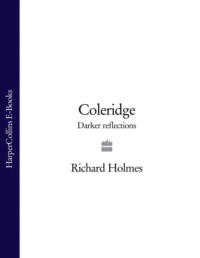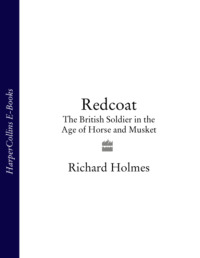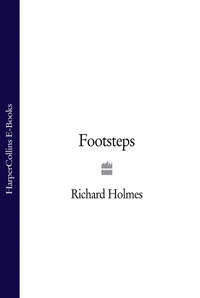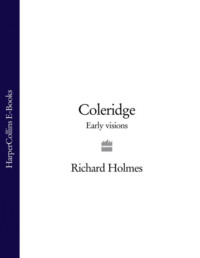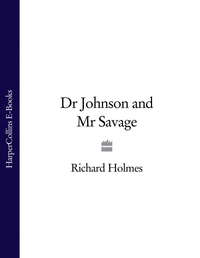
Полная версия
The Age of Wonder: How the Romantic Generation Discovered the Beauty and Terror of Science

The Age of
Wonder
How the Romantic Generation discoveredthe Beauty and Terror of Science
Richard Holmes

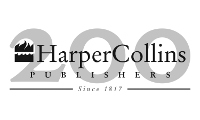
Copyright
William Collins
An imprint of HarperCollinsPublishers Ltd. 1 London Bridge Street London SE1 9GF
www.harpercollins.co.uk
First published by HarperPress in 2008
Copyright © Richard Holmes 2008
The author asserts the moral right to be identified as the author of this work
A catalogue record for this book is available from the British Library
All rights reserved under International and Pan-American Copyright Conventions. By payment of the required fees, you have been granted the non-exclusive, non-transferable right to access and read the text of this ebook on-screen. No part of this text may be reproduced, transmitted, down-loaded, decompiled, reverse engineered, or stored in or introduced into any information storage and retrieval system, in any form or by any means, whether electronic or mechanical, now known or hereinafter invented, without the express written permission of HarperCollins ebooks
HarperCollinsPublishers has made every reasonable effort to ensure that any picture content and written content in this ebook has been included or removed in accordance with the contractual and technological constraints in operation at the time of publication
Source ISBN: 9780007149537
Ebook Edition © SEPTEMBER 2009 ISBN: 9780007349883
Version: 2017-08-14
To Jon Cook at Radio Flatlands
Two things fill my mind with ever new and increasing wonder and awe, the more
often and persistently I reflect upon them: the starry heaven above me and the
moral law within me…I see them in front of me and unite them immediately
with the consciousness of my own existence.
IMMANUEL KANT, Critique of Practical Reason (1788)
He thought about himself, and the whole Earth,
Of Man the wonderful, and of the Stars,
And how the deuce they ever could have birth;
And then he thought of Earthquakes, and of Wars,
How many miles the Moon might have in girth,
Of Air-balloons, and of the many bars
To perfect Knowledge of the boundless Skies;
And then he thought of Donna Julia’s eyes.
BYRON, Don Juan (1819), Canto 1, stanza 92
Those to whom the harmonious doors
Of Science have unbarred celestial stores…
WILLIAM WORDSWORTH, ‘Lines Additional to an Evening Walk’ (1794)
Nothing is so fatal to the progress of the human mind as to suppose our views of
science are ultimate; that there are no mysteries in nature; that our triumphs are
complete; and that there are no new worlds to conquer.
HUMPHRY DAVY, lecture (1810)
I shall attack Chemistry, like a Shark.
SAMUEL TAYLOR COLERIDGE, letter (1800)
…Then felt I like some watcher of the skies
When a new planet swims into his ken;
Or like stout Cortez when with wond’ring eyes
He stared at the Pacific…
JOHN KEATS, ms of sonnet (1816)
To the natural philosopher there is no natural object unimportant or trifling…
a soap bubble…an apple…a pebble…He walks in the midst of wonders.
JOHN HERSCHEL, A Preliminary Discourse on the Study of Natural Philosophy (1830)
Yes, there is a march of Science, but who shall beat the drums of its retreat?
CHARLES LAMB, shortly before his death (1834)
Table of Contents
Cover Page
Title Page
Copyright
Dedication
Epigraph
Prologue
1. Joseph Banks in Paradise
2. Herschel on the Moon
3. Balloonists in Heaven
4. Herschel Among the Stars
5. Mungo Park in Africa
6. Davy on the Gas
7. Dr Frankenstein and the Soul
8. Davy and the Lamp
9. Sorcerer and Apprentice
10. Young Scientists
Epilogue
Cast List
Keep Reading
Bibliography
References
Index
Acknowledgements
About the Author
Also by the Author
About the Publisher
Prologue
1
In my first chemistry class, at the age of fourteen, I successfully precipitated a single crystal of mineral salts. This elementary experiment was done by heating a solution of copper sulphate (I think) over a Bunsen burner, and leaving it to cool overnight. The next morning there it lay at the bottom of my carefully labelled test tube: a single beautiful crystal, the size of a flattened Fox’s Glacier Mint, a miniature ziggurat with a faint blue opalescence, propped up against the inside of the glass (too big to lie flat), monumental and mysterious to my eyes. No one else’s test tube held anything but a few feeble grains. I was triumphant, my scientific future assured.
But it turned out that the chemistry master did not believe me. The crystal was too big to be true. He said (not at all unkindly) that I had obviously faked it, and slipped a piece of coloured glass into the test tube instead. It was quite a good joke. I implored him, ‘Oh, test it, sir; just test it!’ But he refused, and moved on to other matters. In that moment of helpless disappointment I think I first glimpsed exactly what real science should be. To add to it, years later I learned the motto of the Royal Society: Nullius in Verba-‘Nothing upon Another’s Word’. I have never forgotten this incident, and have often related it to scientific friends. They nod sympathetically, though they tend to add that I did not (as a matter of chemical fact) precipitate a crystal at all-what I did was to seed one, a rather different process. No doubt this is so. But the eventual consequence, after many years of cooling, has certainly been to precipitate this book.
2
The Age of Wonder is a relay race of scientific stories, and they link together to explore a larger historical narrative. This is my account of the second scientific revolution, which swept through Britain at the end of the eighteenth century, and produced a new vision which has rightly been called Romantic science.1
Romanticism as a cultural force is generally regarded as intensely hostile to science, its ideal of subjectivity eternally opposed to that of scientific objectivity. But I do not believe this was always the case, or that the terms are so mutually exclusive. The notion of wonder seems to be something that once united them, and can still do so. In effect there is Romantic science in the same sense that there is Romantic poetry, and often for the same enduring reasons.
The first scientific revolution, of the seventeenth century, is familiarly associated with the names of Newton, Hooke, Locke and Descartes, and the almost simultaneous foundations of the Royal Society in London and the Académie des Sciences in Paris. Its existence has long been accepted, and the biographies of its leading figures are well known.♣ But this second revolution was something different. The first person who referred to a ‘second scientific revolution’ was probably the poet Coleridge in his Philosophical Lectures of 1819.2 It was inspired primarily by a sudden series of breakthroughs in the fields of astronomy and chemistry. It was a movement that grew out of eighteenth-century Enlightenment rationalism, but largely transformed it, by bringing a new imaginative intensity and excitement to scientific work. It was driven by a common ideal of intense, even reckless, personal commitment to discovery.
It was also a movement of transition. It flourished for a relatively brief time, perhaps two generations, but produced long-lasting consequences-raising hopes and questions-that are still with us today. Romantic science can be dated roughly, and certainly symbolically, between two celebrated voyages of exploration. These were Captain James Cook’s first round-the-world expedition aboard the Endeavour, begun in 1768, and Charles Darwin’s voyage to the Galapagos islands aboard the Beagle, begun in 1831. This is the time I have called the Age of Wonder, and with any luck we have not yet quite outgrown it.
The idea of the exploratory voyage, often lonely and perilous, is in one form or another a central and defining metaphor of Romantic science. That is how William Wordsworth brilliantly transformed the great Enlightenment image of Sir Isaac Newton into a Romantic one. While a university student in the 1780s Wordsworth had often contemplated the full-size marble statue of Newton, with his severely close-cropped hair, that still dominates the stone-flagged entrance hall to the chapel of Trinity College, Cambridge. As Wordsworth originally put it, he could see, a few yards from his bedroom window, over the brick wall of St John’s College,
The Antechapel, where the Statue stood
Of Newton, with his Prism and silent Face.
Sometime after 1805, Wordsworth animated this static figure, so monumentally fixed in his assured religious setting. Newton became a haunted and restless Romantic traveller amidst the stars:
And from my pillow, looking forth by light
Of moon or favouring stars, I could behold
The Antechapel where the Statue stood
Of Newton, with his prism and his silent face,
The marble index of a Mind for ever
Voyaging through strange seas of Thought, alone.3
Around such a vision Romantic science created, or crystallised, several other crucial conceptions-or misconceptions-which are still with us. First, the dazzling idea of the solitary scientific ‘genius’, thirsting and reckless for knowledge, for its own sake and perhaps at any cost. This neo-Faustian idea, celebrated by many of the imaginative writers of the period, including Goethe and Mary Shelley, is certainly one of the great, ambiguous creations of Romantic science which we have all inherited. Closely connected with this is the idea of the ‘Eureka moment’, the intuitive inspired instant of invention or discovery, for which no amount of preparation or preliminary analysis can really prepare. Originally the cry of the Greek philosopher Archimedes, this became the ‘fire from heaven’ of Romanticism, the other true mark of scientific genius, which also allied it very closely to poetic inspiration and creativity. Romantic science would seek to identify such moments of singular, almost mystical vision in its own history. One of its first and most influential examples was to become the story of the solitary, brooding Newton in his orchard, seeing an apple fall and ‘suddenly’ having his vision of universal gravitation. This story was never told by Newton at the time, but only began to emerge in the mid-eighteenth century, in a series of memoirs and reminiscences.♣
The notion of an infinite, mysterious Nature, waiting to be discovered or seduced into revealing all her secrets, was widely held. Scientific instruments played an increasingly important role in this process of revelation, allowing man not merely to extend his senses passively-using the telescope, the microscope, the barometer-but to intervene actively, using the voltaic battery, the electrical generator, the scalpel or the air pump. Even the Montgolfier balloon could be seen as an instrument of discovery, or indeed of seduction.
There was, too, a subtle reaction against the idea of a purely mechanistic universe, the mathematical world of Newtonian physics, the hard material world of objects and impacts. These doubts, expressed especially in Germany, favoured a softer ‘dynamic’ science of invisible powers and mysterious energies, of fluidity and transformations, of growth and organic change. This is one of the reasons that the study of electricity (and chemistry in general) became the signature science of the period; though astronomy itself, once the exemplary science of the Enlightenment, would also be changed by Romantic cosmology.
The ideal of a pure, ‘disinterested’ science, independent of political ideology and even religious doctrine, also began slowly to emerge. The emphasis on a secular, humanist (even atheist) body of knowledge, dedicated to the ‘benefit of all mankind’, was particularly strong in Revolutionary France. This would soon involve Romantic science in new kinds of controversy: for instance, whether it could be an instrument of the state, in the case of inventing weapons of war. Or a handmaiden of the Church, supporting the widely held view of ‘Natural theology’, in which science reveals evidence of a divine Creation or intelligent design.
With these went the new notion of a popular science, a people’s science. The scientific revolution of the late seventeenth century had promulgated an essentially private, elitist, specialist form of knowledge. Its lingua franca was Latin, and its common currency mathematics. Its audience was a small (if international) circle of scholars and savants. Romantic science, on the other hand, had a new commitment to explain, to educate, to communicate to a general public.
This became the first great age of the public scientific lecture, the laboratory demonstration and the introductory textbook, often written by women. It was the age when science began to be taught to children, and the ‘experimental method’ became the basis of a new, secular philosophy of life, in which the infinite wonders of Creation (whether divine or not) were increasingly valued for their own sake. It was a science that, for the first time, generated sustained public debates, such as the great Regency controversy over ‘Vitalism’: whether there was such a thing as a life force or principle, or whether men and women (or animals) had souls.
Finally, it was the age which challenged the elite monopoly of the Royal Society, and saw the foundation of scores of new scientific institutions, mechanics institutes and ‘philosophical’ societies, most notably the Royal Institution in Albemarle Street in 1799, the Geological Society in 1807, the Astronomical Society in 1820, and the British Association for the Advancement of Science in 1831.
Much of this transition from Enlightenment to Romantic science is expressed in the paintings of Joseph Wright of Derby. Closely attached to the Lunar Society, and the friend of Erasmus Darwin and Joseph Priestley, Wright became a dramatic painter of experimental and laboratory scenes which reinterpreted late-eighteenth-century Enlightenment science as a series of mysterious, romantic moments of revelation and vision. The calm, glowing light of reason is surrounded by the intense, psychological chiaroscuro associated with Georges de la Tour. This is most evident in the famous series of scientific demonstration scenes painted at the height of his career: The Orrery (1766, Derby City Museum and the frontispiece of this book), The Air Pump (1767, National Gallery, London) and The Alchemist (1768, Derby City Museum). But these memorable paintings also ask whether Romantic science contained terror as well as wonder: if discovery and invention brought new dread as well as new hope into the world. We have certainly inherited this dilemma.
3
The Age of Wonder aims to raise and reflect upon such questions. Yet in the end the book remains a narrative, a piece of biographical storytelling. It tries to capture something of the inner life of science, its impact on the heart as well as on the mind. In the broadest sense it aims to present scientific passion, so much of which is summed up in that childlike, but infinitely complex word, wonder. Plato argued that the notion of ‘wonder’ was central to all philosophical thought: ‘In Wonder all Philosophy began: in Wonder it ends…But the first Wonder is the Offspring of Ignorance; the last is the Parent of Adoration.’4
Wonder, in other words, goes through various stages, evolving both with age and with knowledge, but retaining an irreducible fire and spontaneity. This seems to be the implication of Wordsworth’s famous lyric of 1802, which was inspired not by Newton’s prism, but by Nature’s:
My heart leaps up when I behold
A rainbow in the sky;
So was it when my life began;
So is it now I am a man;
So be it when I shall grow old,
Or let me die!…5
This book is centred on two scientific lives, those of the astronomer William Herschel and the chemist Humphry Davy. Their discoveries dominate the period, yet they offer two almost diametrically opposed versions of the Romantic ‘scientist’, a term not coined until 1833, after they were both dead. It also gives an account of their assistants and protégés, who eventually became much more than that, and handed on the flame to the very different world of professional Victorian science. But it draws in many other lives, and it is interrupted by many episodes of scientific endeavour and high adventure so characteristic of the Romantic spirit: ballooning, exploring, soul-hunting. These were all part of the great journey.♣
It is also held together by, as a kind of chorus figure or guide, a scientific Virgil. It is no coincidence that he began his career a young and naïve scientific traveller, an adventurer and secret journal-keeper. However, he ended it as the longest-serving, most experienced and most domineering President of the Royal Society: the botanist, diplomat and éminence grise Sir Joseph Banks. As a young man Banks sailed with Captain Cook round the world, setting out in 1768 on that perilous three-year voyage into the unknown. This voyage may count as one of the earliest distinctive exploits of Romantic science, not least because it involved a long stay in a beautiful but ambiguous version of Paradise-Otaheite, or the South Pacific island of Tahiti.
♣ The fine survey by Lisa Jardine, Ingenious Pursuits: Building the Scientific Revolution (1999), gives a vivid picture of the leading figures in the seventeenth-century scientific revolution across Europe, and includes a significant introductory essay on the emerging role of science in modern society. See also my bibliography, ‘The Bigger Picture’, page 485.
♣ The apple fell in his orchard at Woolthorpe, Lincolnshire, where Newton, aged twenty-five, had retired from Cambridge during the Plague of 1665. Various versions of the story began to appear after his death in 1727. It appears in Stukeley’s unpublished Memoir of Newton, originally written in 1727, but not given to the Royal Society in manuscript until 1752; in unpublished notes for a biography by his nephew John Conduit; and for the first time in print in Voltaire’s Letters on the English Nation (1734). Part of the power of the story was that it replaced the sacred Biblical account of the Fall from Innocence in Genesis (Eve and the apple) with a secular parable of the Ascent to Knowledge. See Patricia Fara, Newton: The Making of Genius (2005); and for a broad visionary perspective, Jacob Bronowski’s scientific classic The Ascent of Man (1973).
♣ A brief guide to the many figures who jostle into this book, some familiar but others obscure or unexpected, appears in my Cast List, page 471.
1 Joseph Banks in Paradise
1
On 13 April 1769, young Joseph Banks, official botanist to HM Bark Endeavour, first clapped eyes on the island of Tahiti, 17 degrees South, 149 degrees West. He had been told that this was the location of Paradise: a wonderful idea, although he did not quite believe it.
Banks was twenty-six years old, tall and well-built, with an appealing bramble of dark curls. By temperament he was cheerful, confident and adventurous: a true child of the Enlightenment. Yet he had thoughtful eyes and, at moments, a certain brooding intensity: a premonition of a quite different sensibility, the dreaming inwardness of Romanticism. He did not like to give way to it. So he kept good company with his shipmates, and had carefully maintained his physical fitness throughout the first eight months of the voyage. He regarded himself-‘thank god’-as in as good mental and physical trim as a man could be. When occasionally depressed, he did vigorous jumping ‘rope exercises’ in his cabin, once nearly breaking his leg while skipping.1
He was capable of working patiently for hours on end in the extremely cramped conditions on board. The quarterdeck cabin, which he shared with his friend Dr Daniel Solander, was approximately eight feet by ten. He had adopted a strict daily routine of botanical drawing, electrical experiments, animal dissections, deck-walking, bird-shooting (when available) and journal-writing. He constantly fished specimens from the sea, shot or netted wild birds, and observed meteorological phenomena, such as the beautiful ‘lunar rainbows’. When his gums had begun bleeding ominously with the onset of scurvy, he had calmly treated himself with a specially pre-prepared syrup (‘Dr Hume’s mixture’) of concentrated lemon juice, taking precisely six ounces a day.2 Within a week he was cured.
Just occasionally young Banks’s scientific enthusiasm turned to explosive impatience. When rudely prevented from carrying out any botanical field trips by the Spanish Consul at Rio de Janeiro, and confined for three weeks to the sweltering ship in the harbour at Rio, he wrote colourfully to a friend at the Royal Society: ‘You have heard of Tantalus in hell, you have heard of the French man laying swaddled in linen between two of his Mistresses both naked using every possible means to excite desire. But you have never heard of a tantalized wretch who has born his situation with less patience than I have done mine. I have cursed, swore, raved, stamped.’3 Banks did however unofficially slip over the side at night to collect wild seeds and plants, a hoard which included the exotic purple bougainvillea.
Once among the Polynesian isles, Banks spent hours at the topgallant masthead, his large form crouched awkwardly in the crow’s nest, looking for landfall beneath the heavy tropical cloudbase. At night the crew would hear distant surf roaring through the dark. Now at last he gazed out at the fabled blue lagoon, the black volcanic sand, and the intriguing palm trees (Linnaeus’s Arecaceae). Above the beach the precipitous hills, dense with dark-green foliage and gleaming with white streams, rose sharply to 7,000 feet. On the naval chart Banks noted that the place was marked, prosaically enough, ‘Port Royal Bay, King George the Third’s Island’. ‘As soon as the anchors were well down the boats were hoisted out and we all went ashore where we were met by some hundreds of the inhabitants whose faces at least gave evident signs that we were not unwelcome guests, tho they at first hardly dare approach us. After a little time they became very familiar. The first who aproachd us came creeping almost on his hands and knees and gave us a green bough the token of peace.’
Taking the hint, all the British shore party pulled down green boughs from the surrounding palm trees and carried them along the beach, waving them like ceremonial parasols. Eventually they were shown an idyllic spot close by a stream, where it was indicated that they could set up camp. The green boughs were thrown down in a great pile on the sand, ‘and thus peace was concluded’. Here the British settlement known as Fort Venus was to be established: ‘We then walked into the woods followed by the whole train to whom we gave beads and small presents. In this manner we walked for 4 or 5 miles under groves of Cocoa nut and Bread fruit trees loaded with a profusion of fruit and giving the most gratefull shade I have ever experienced. Under these were the habitations of the people most of them without walls. In short the scene we saw was the truest picture of an Arcadia of which we were going to be Kings that the imagination can form.’


